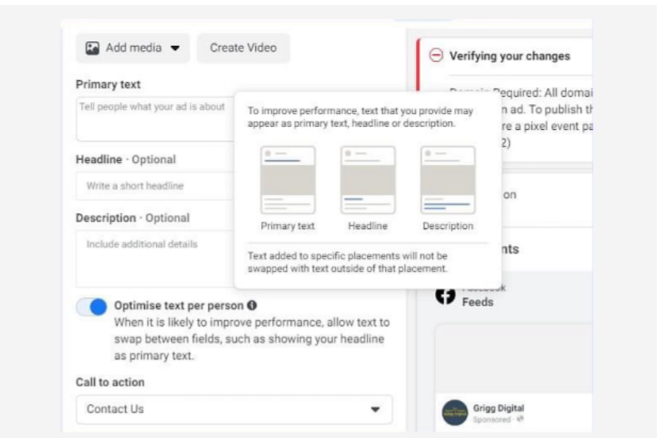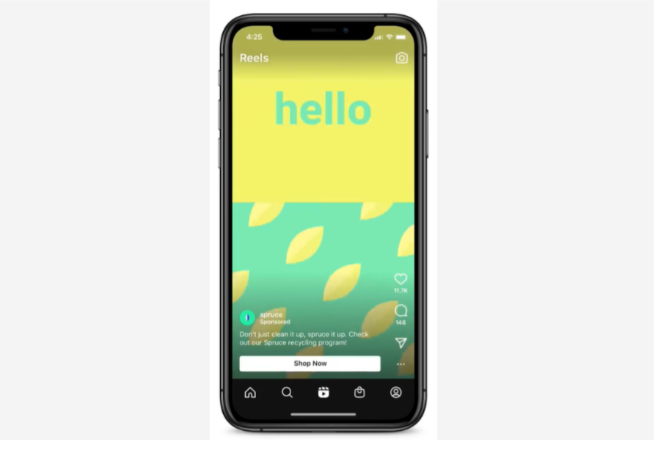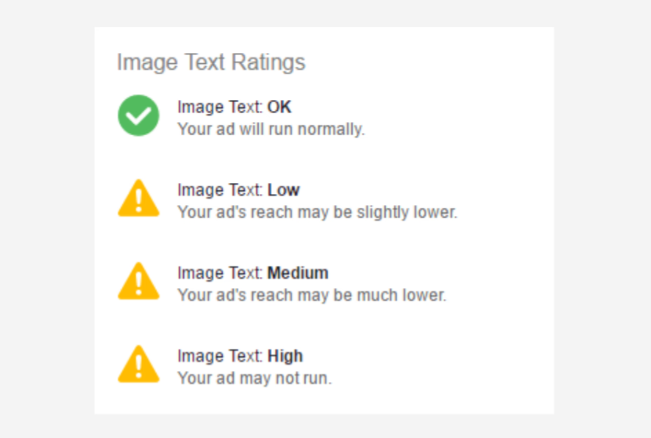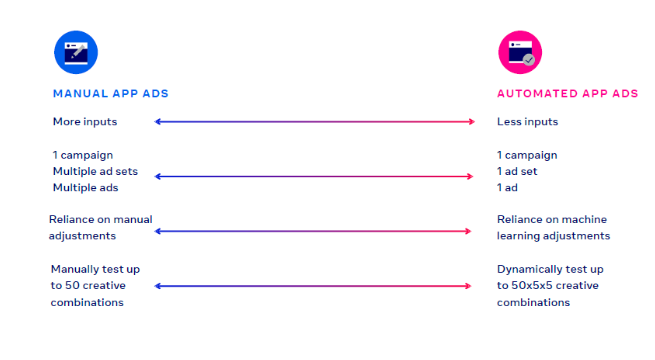Facebook Ads Manager updates happen regularly, sometimes even overnight.
In order to keep up with the users’ and the advertisers’ demands, the platform constantly needs to change and adapt.
Keeping up with all of this can be overwhelming.
For this reason, we did the research for you. Read this article and learn about the latest and most significant Facebook Ads Manager updates and announcements all marketers need to know about.
Note: the Facebook company is now called Meta. We don’t want this to confuse you, so in this article, we’ll stick with the company’s old name.
Let’s begin.


1. New “Optimize Text per Person” Feature
In June 2021, Facebook Ads Manager rolled out a new feature in the ad setup process. It is called “Optimize Text Per Person”, and it helps with automated ad customization.
Familiar with Google Ads?
Then you should know that this ad option works very similarly to Google’s famous Responsive Search Ads. Just like with this Google’s feature, it’s all about automation and testing.
The “Optimize Text Per Person” feature allows Facebook to automatically rotate your ads’ captions, headlines, and descriptions. Facebook machine learning predicts what users will respond to best and shows them different combinations.
Let’s say your headline says, “Christmas discount,” and your description says, “Get discounts on holiday merch.” For selected users, the Facebook algorithm may decide to swap the two and show the description first.
The best thing about this feature?
It’s super easy to set up.
In the ad setup process, there is an “Optimize Text Per User” button. You only need to enable it, and that’s it.
Previously, there was a similar feature on Facebook called “multiple text variations for ad copy” that was introduced in 2019. Advertisers needed to provide multiple ad text lines, and Facebook would choose the best ones.
The new version is similar to the old one. The main difference? It spares the advertiser from having to create different copy versions. Instead, it relies on any existing ad elements to predict the most likely user response.


2. Instagram Reels Ads Are Now Available to Everyone
Short video clips have been a trend for a while now, driving the success of platforms like TikTok.
Facebook-owned Instagram decided to hop on the bandwagon as well.
For this reason, Instagram rolled out its very own Instagram Reels back in August 2020. This feature works very similarly to the one on TikTok.
Reels allow users to share short-form videos in separate feeds. Short as they are, they have good chances of catching the users’ attention.
In the light of that, Facebook saw the Reels’ advertising potential. Therefore, in April 2021, they started testing Reels for advertising in selected countries (including the US, the UK, France, and Canada).
Obviously, the test turned out to be a success.
In June 2021, Facebook officially launched Reels ads for all advertisers globally. The feature was warmly welcomed by international accounts that didn’t get access to it in the test phase.
Sometimes, Facebook sets restrictions for smaller ad accounts. Not in this case. In order to create Reels ads, you don’t have to fulfill any kind of account-level requirements.
You may be wondering – how and where do Reels appear?
Let’s quote Instagram on this, “Reels is the best place on Instagram to reach people who don’t follow you and a growing global stage where brands and creators can be discovered by anyone.”
Sure, this is an embellished PR line.
The bottom line is that Reels are a new way to reach audiences with Instagram promotions. If the Reels feature keeps on growing, their advertising power will increase simultaneously.
Reels ads are displayed as a full-screen ad format in between regular Reels. Just like Reels, the ads can be up to 30 seconds long. Users are able to like, comment, watch, save and share them.


3. No More Targeting Teens by Interests
As of August 2021, Facebook introduced a new privacy update that restricts ads that target teenagers.
What does this mean exactly?
Advertisers are no longer able to target teenagers based on their interests and online activity. These targeting options can now only be applied to users over the age of 18 globally (over 20 and 21 in some countries).
When it comes to those under the age of 18, advertisers can now to target them by their age, location, and gender only.
Why is it such a step?
According to Facebook, they want to create a safe and private experience for young people on their platform.
This update aims to “protect” teens from advertisements promoting extreme weight loss, online dating, and similar potentially dangerous content. Facebook is aware of the impact of social media on young people, so we decided to take this step.
Therefore, if your target audience is young, be aware that your target options are limited.
One solution to this problem is to invest in the quality and quantity of your creativity. This approach helps you overcome targeting hurdles and find new ways to reach your audience.


4. The 20% Rule Is Not a Rule Anymore
If you’ve advertised on Facebook, you’ve probably heard of the “20% text in ad images” rule.
You probably hated it too.
Well, as of September 2020, you don’t have to worry anymore.
Facebook no longer approves ads that make up more than 20% of ad images. This means that if Facebook disapproves your ad, you have more creative freedom and no extra work.
Nevertheless, Facebook holds a 20% rule as a recommendation for best performance. In their opinion, these types of ads tend to perform better than ads where the text occupies more space.
Can I ignore the recommendations and put more text in my ad? Wait a minute,
There’s one more thing you need to know.
No, Facebook cannot directly disapprove ads. However, ad reach may still be limited. Facebook Ads Manager now gives ads an OK, low, medium, or high “caption score.” Based on this rating, Facebook will determine the reach of your ad.


5. Reach New App Users with Automated App Ads
If you want to promote your app on Facebook, there are updates you need to know.
In the fall of 2020, Facebook introduced Automated App Advertising (AAA). This feature allows app advertisers to create fully automated campaigns optimized for best performance. To achieve this, we use machine learning.
Automatic App Ads is an upgrade from Facebook’s standard manual app ads.
What is the difference between the two?
For manual app ads, a campaign can contain multiple ad sets and ads. You also need to manually test your creatives and their combinations.
Easy to set up automatic app ads. Only one ad set and one ad can be included in a campaign.
In addition, you can use the dynamic creative testing feature to automatically test different creative combinations. All you have to do is provide up to 50 videos / images and 5 titles and descriptions.
But not everything is as ideal as you might think.
The main drawback of automated app advertising is that it doesn’t support certain features. This includes targeting by age, gender, demographics, interests and more. These ads only support country, language, and operating system targeting.
It also does not support certain ad formats such as playable ads, carousel ads, and instant experience ads.
It is important to note that this feature is an ongoing work. Facebook is confident that it will continue to update AAA and catch up with it.
For now, if you want to see if your AAA campaign is right for you, try running an A / B test with your default app campaign. Create the same settings (target country, creative, optimization goals) for both campaigns.
Run the test for 10-28 days to see if the AAA results are better than usual.
6. Limited Access to Data as of iOS 14.5
This isn’t always a Facebook Ads Manager replace in line with se, however it’s far some thing that strongly affected Facebook marketing and marketing.
It`s additionally some thing that driven Facebook into pronouncing new updates.
In the primary 1/2 of of 2021, Apple has added privateness adjustments beginning with iOS 14.5. These adjustments follow to IDFA (Identifier for Advertisers). Within any app, iOS customers can now decide inside and outside of records series.
That consists of the Facebook and Instagram app as well.
Those customers who decide out of records series decline to have their records used for marketing and marketing purposes. For this reason, it’s far now not viable to goal those customers primarily based totally on sure attributes.
This has impacted all entrepreneurs seeking to attain human beings on their cellular devices. However, this example has been extra adverse to app entrepreneurs than all people else.
App entrepreneurs now have very restrained and much less granular records on their decide-out audience.
They get to look very restrained demographic records, CPIs and variety of installs simplest seem after a week, the variety of campaigns and advert agencies is restrained, etc. The simplest actual records that advertisers can see are advert spend and CPMs.
All of this made marketing and marketing on Facebook very, very challenging. Because of all of the lacking records, Facebook advert campaigns aren`t as optimized as they used to be.
To fight this loss of records, Facebook has introduced new performance, reporting, and dimension features. This consists of:
- Aggregated Event Measurement for iOS14 users
- View-through attribution will become a default feature
- Consideration of all advertiser-associated URLs
These future Facebook Ads Manager updates are an attempt to fill the reporting and measurement gap while still protecting user privacy.
When will they appear? Will they fulfill their purpose? We have yet to see.
Wrapping up on Facebook Ads Manager Updates
That’s it. These are the top Facebook Ads Manager updates that every Facebook advertiser should know about.
Update this list regularly as new major updates are released.
Until then, make sure you understand and comply with all these Facebook Ads Manager updates.
If You Want to Run Facebook ads, then We are help to help you and provide you the best services.
